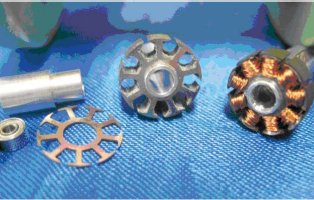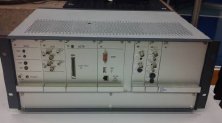Publications
Categories
- (34)
- (9)
- (3)
- (145)
- (18)
- (7)
- (5)
- (8)
- (9)
- (17)
- (2)
- (104)
- (7)
- (15)
- (7)
- (2)
- (1)
- (6)
- (155)
- (20)
- (2)
- (5)
- (111)
- (35)
- (11)
- (4)
- (59)
- (18)
- (3)
- (7)
- (62)
- (18)
- (5)
- (24)
- (7)
- (12)
- (1)
- (2)
- (2)
- (1)
- (1)
- (14)
- (13)
- (4)
- (6)

Compact, Lightweight, and Efficient Piezo-Actuation Chain for aeronautical applications
19 June 2023
Many past and on-going studies are focusing on the use of piezo-actuators for aeronautical applications. One of the trendiest topics is the use of such devices for active flow control in aircraft, in order to reduce fuel consumption and noise. However, the implementation of such systems in aircraft suffer a lack of maturity with respect to aeronautical constraints, which are: high efficiency, compactness, and lightweight. In general, the actuators are composed of ceramics integrated in a metallic shell, which makes them heavy. For driving the actuators, the power amplifiers employed are usually linear amplifiers, which have a poor efficiency, leading to bulky designs due to large heatsinks. This paper presents recent developments that have been made to cope with these issues in order to obtain a piezo-actuation chain suitable for aeronautical applications.

Upgrade of miniature outrunner brushless DC motors
19 June 2023
Miniature Brushless DC motors (less than 5gr) offer some challenges both in the design and the manufacturing. They are used in several mass volume applications, such as hard disk drive, gyroscopes, and more recently in some unnamed aircraft vehicles (UAVs), where Cedrat is involved. For this last application, the efficiency is of upmost importance. Cedrat has used its Flux software solution to optimize the Brushless motor design: Some materials and dimensions have been changed in the motor to improve its efficiency.

Improving Lamb Wave detection for SHM using a dedicated LWDS electronics
19 June 2023
In the context of Condition Based Maintenance (CBM) for aircrafts, Structural Health Monitoring (SHM) is one main field of
research. Detection and localization of damages in a structure request reliability of the equipment and repeatability of the measurements and process. An electronic device called Lamb Wave Detection System (LWDS) have been developed and manufactured to manage piezo-electric patches either in emission or reception mode with a high commutation rate. Besides, integration of the piezo patches is another crucial aspect of reliability. Several methods as modelling and dispersion curves can define the frequency range of Lamb waves to optimize the piezo-electric coupling.
This work which takes part of the H2020 ReMAP project about adaptative aircraft maintenance planning, is presented in the article.

Self-tuning semi-active tuned-mass damper for machine tool chatter suppression
19 June 2023
Tuned mass dampers are simple and efficient devices for suppression of machine tool chatter, which is one of the principal effects limiting productivity in many machining processes. However, their effectiveness depends on a proper tuning of the damper dynamics to the dynamics of the machine. This involves the dynamic characterisation of the machining process, in order to identify the critical resonance frequency, and the possibility of matching the resonance frequency of the damper to frequency. The difficulty of meeting these two requirements has been limiting the use of tuned mass dampers in industrial applications.

Valves based on amplified piezoelectric actuators
6 January 2002
Amplified Piezo Actuators have been developed at CEDRAT TECHNOLOGIES for several years. Their well – known advantages (rapid response and precise positioning) have been used in valve designs to obtain both rapid or fine proportional valves.

Eddy current sensors on Printed Circuit Board for compact mechatronic application
19 June 2023
In a contact of always smaller and smarter mechatronics devices, the needs of more integrated sensors becomes critical. Particularly, small mechanisms using small actuators like piezo actuators require compact sensors, with performances that measure up to the actuators characteristics.


